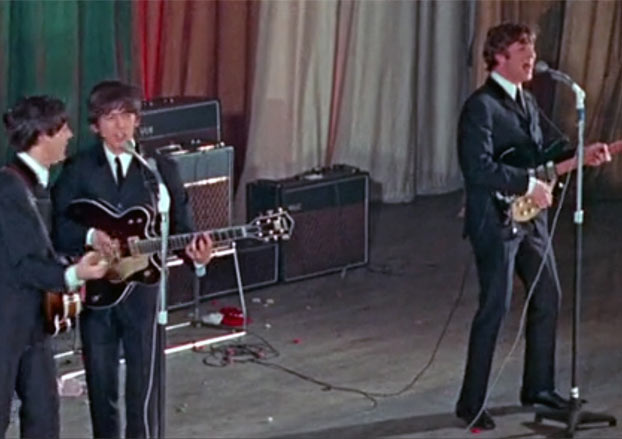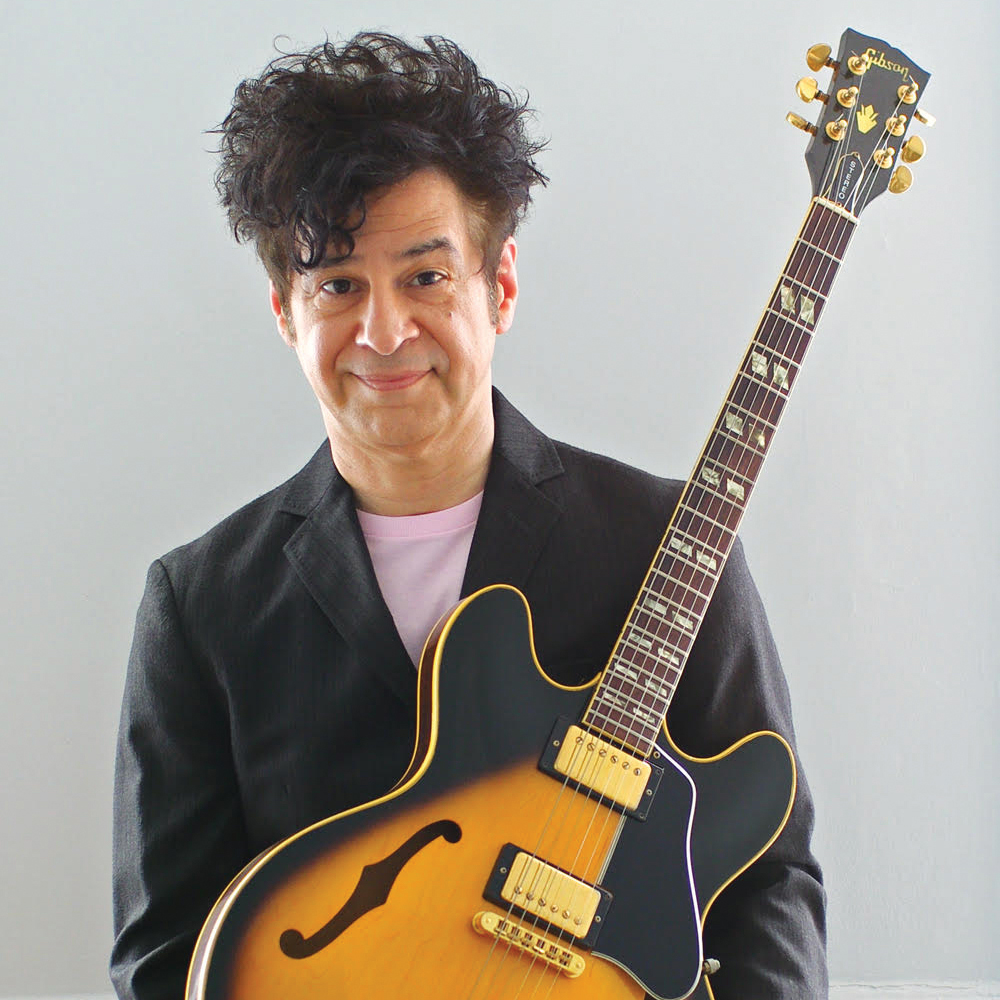Watch the Beatles in Rare 1963 Color Clip from Before Their U.S. Arrival
A rare pre-Ed Sullivan clip of The Beatles in color and with high-quality audio.

Ron Howard’s 2016 documentary The Beatles: Eight Days a Week offered an unprecedented look at the group’s touring years from 1963 through 1966.
Among the many rare snippets was color footage recorded at a November 20, 1963, date at the ABC Cinema in Manchester, England. That clip is a Beatles fan’s dream. High-quality color footage of the group from before its February 1964 arrival in the U.S. is hard to come by. What’s readily available is mostly in black and white and often has poor audio quality.
The Manchester clip is an exception. It was created by Pathé News for the short feature The Beatles Come to Town and features performances of “She Loves You” and “Twist and Shout.” The film was shot in Technicolor and Techniscope (a budget widescreen process from the period) and features good-quality audio. Even without the benefit of modern restoration, it makes for enjoyable viewing. The film was originally shown in British theaters during the week of December 22, 1963, as a preview to the daily feature.
While it’s great to see the ABC Theater footage restored and included in Howard’s film, the performance of “She Loves You” is broken up with additional documentary clips that obscure the song’s final verse and chorus. Eight Days a Week also omits the additional footage from the original six-and-a-half-minute newsreel, including the theater preparations and the Beatles chatting with photographers. Fortunately, The Beatles Come to Town is available in its entirety on YouTube.
The Manchester show predates the Beatles’ arrival in America by nearly three months, so they were entirely a U.K. phenomenon at this point. By then, the group had released four hit singles in their home country—three of them bona fide Number Ones—and a chart-topping album, their 1963 debut, Please Please Me. The date of this performance is very close to the release of the Beatles’ second album, With the Beatles, which was issued on November 22 of that year. One week later, on November 29, they would release “I Want to Hold Your Hand,” a smash hit that sold one million copies in the U.K. on advance orders alone.
By the time The Beatles Come to Town was screened in British theaters, the group had begun to receive airplay on U.S. radio stations. “I Want to Hold Your Hand,” their Capitol Records debut, was released in America on December 26 and instantly became a massive hit. Roughly six weeks later, the Beatles made their U.S. debut on The Ed Sullivan Show, breaking them into the North American market and making Beatlemania a global phenomenon.
While The Beatles Come to Town includes just two complete Beatles performances, it offers an amusing look at a culture that the group would soon change forever. In addition to the hordes of screaming fans, most of whom are female, we’re treated to quaint scenes like the theater manager attending to his corps of uniformed attendants and ushers, and the Beatles posing good-naturedly for photographers while holding a large stuffed panda doll. The film also captures the full-blown hysteria on display at Beatles concerts, including one particularly overwrought fan shown at 4:00. Watch as well for the ear-plugging mom at 4:26 and the young head-bobbing bobby at 5:37.
Get The Pick Newsletter
All the latest guitar news, interviews, lessons, reviews, deals and more, direct to your inbox!
It’s interesting to compare some of these scenes with those shot by Richard Lester for the theater concert in the closing act of the Beatles’ 1964 feature-length debut, A Hard Day’s Night. Both capture the intensity of the crowd as well as the extreme emotional reactions of individual fans. In particular, The Beatles Come to Town includes a shot from behind John and Ringo at 5:31 that’s mimicked, perhaps coincidentally, in the A Hard Day’s Night concert when the camera tracks behind the group to show them together with the audience.
You can watch The Beatles Come to Town below. For unknown reasons, the clip features the film twice.
Christopher Scapelliti is editor-in-chief of Guitar Player magazine, the world’s longest-running guitar magazine, founded in 1967. In his extensive career, he has authored in-depth interviews with such guitarists as Pete Townshend, Slash, Billy Corgan, Jack White, Elvis Costello and Todd Rundgren, and audio professionals including Beatles engineers Geoff Emerick and Ken Scott. He is the co-author of Guitar Aficionado: The Collections: The Most Famous, Rare, and Valuable Guitars in the World, a founding editor of Guitar Aficionado magazine, and a former editor with Guitar World, Guitar for the Practicing Musician and Maximum Guitar. Apart from guitars, he maintains a collection of more than 30 vintage analog synthesizers.
“The rest of the world didn't know that the world's greatest guitarist was playing a weekend gig at this place in Chelmsford”: The Aristocrats' Bryan Beller recalls the moment he met Guthrie Govan and formed a new kind of supergroup
“We hadn’t really rehearsed. As we were walking to the stage, he said, ‘Hang on, boys!’ And he went in the corner and vomited”: Assembled on 24 hours' notice, this John Lennon-led, motley crew supergroup marked the beginning of the end of the Beatles











